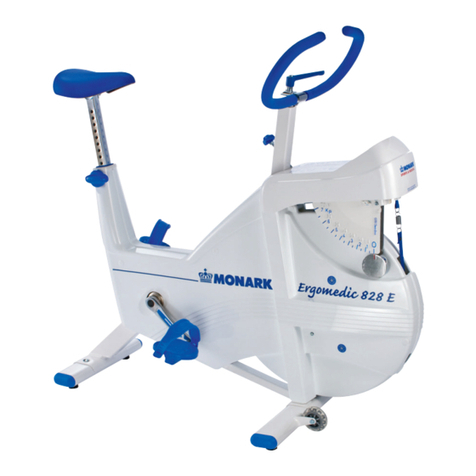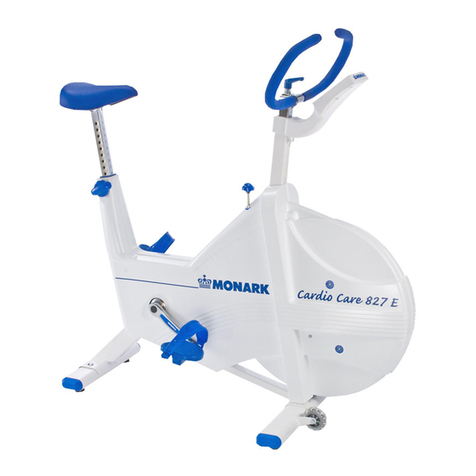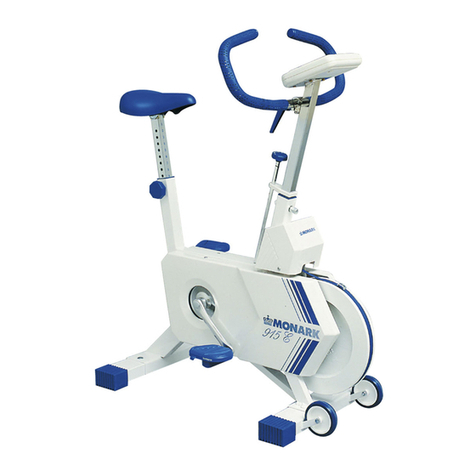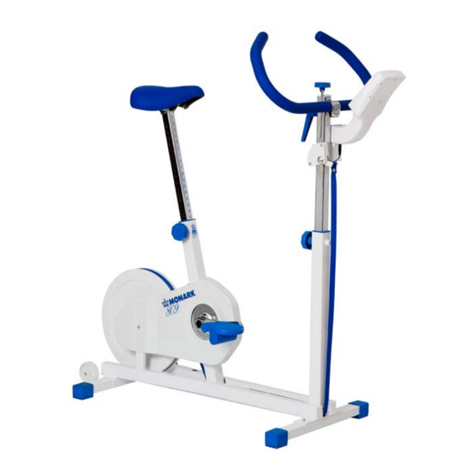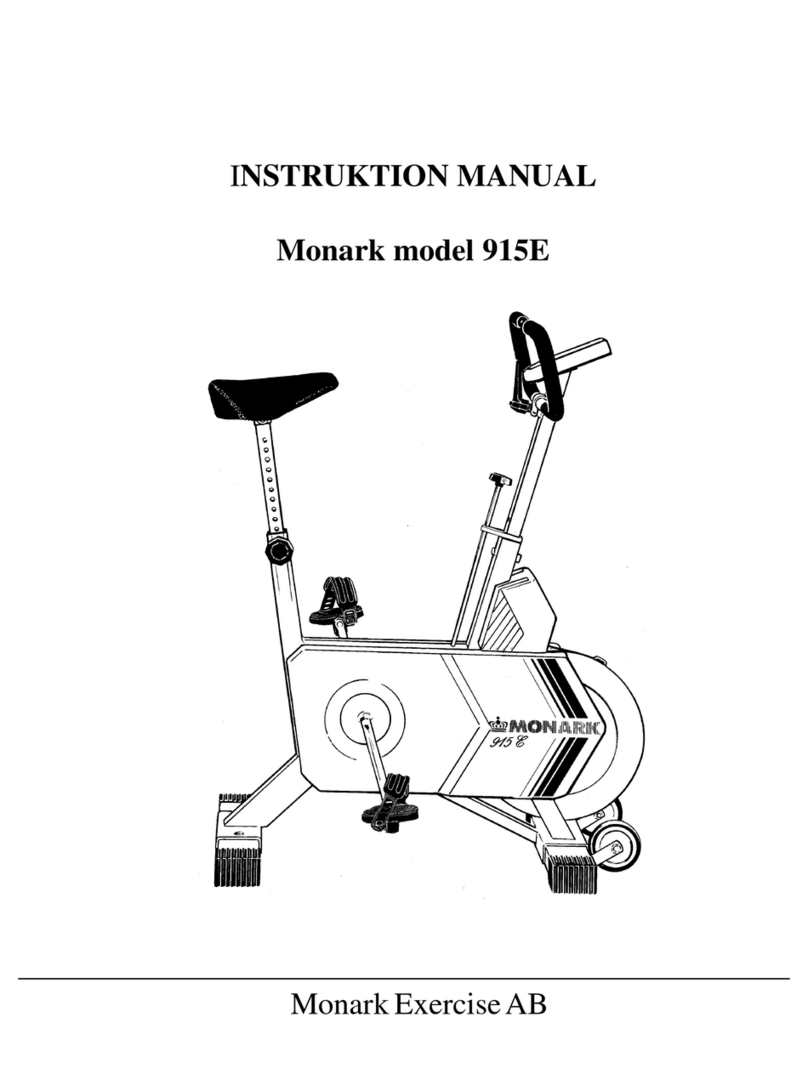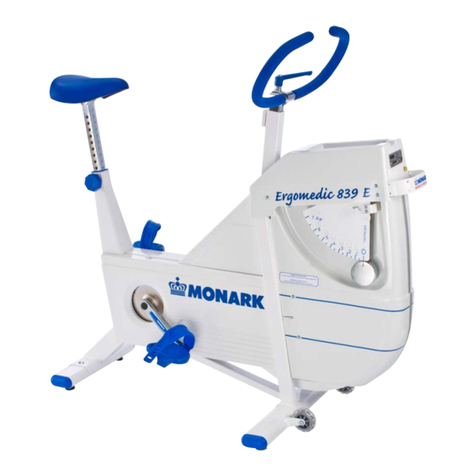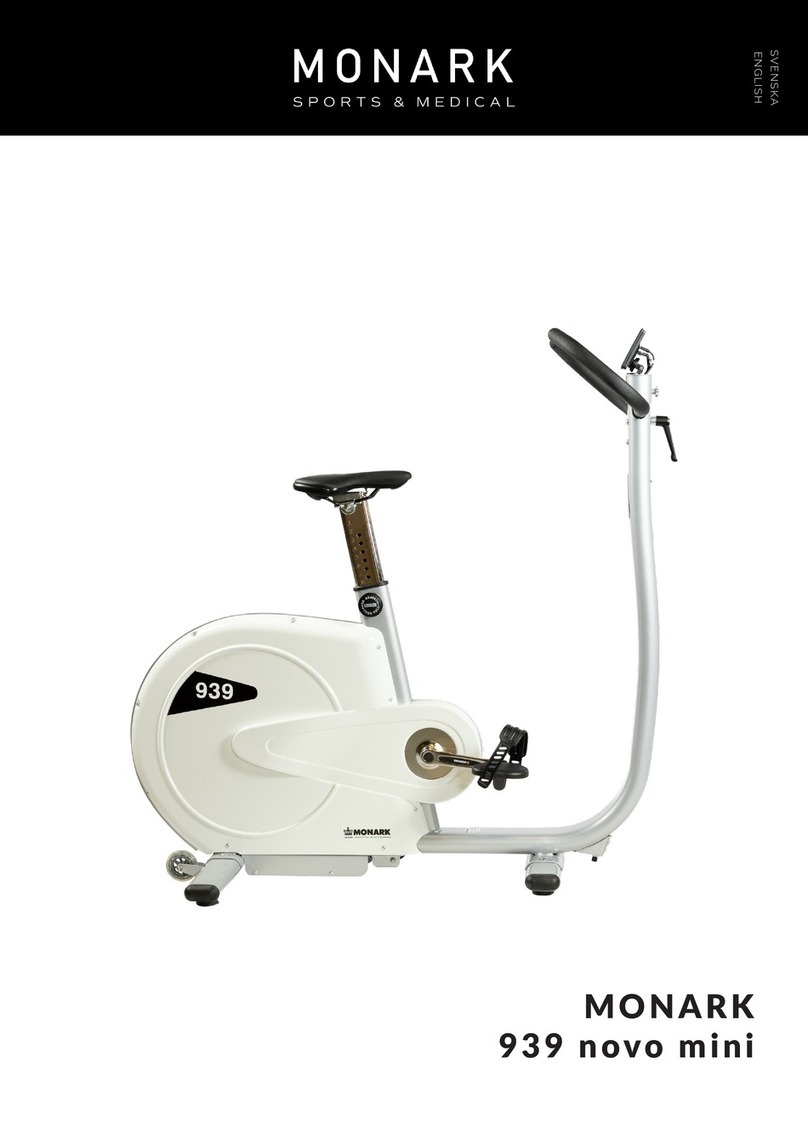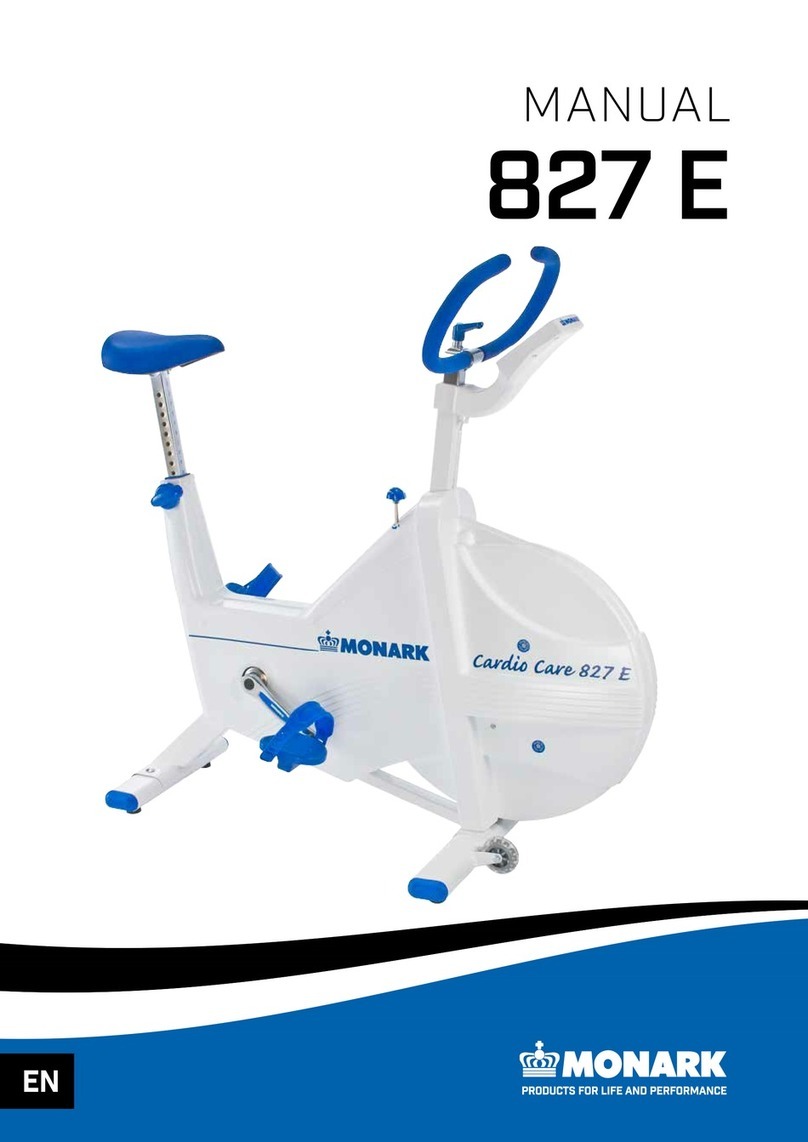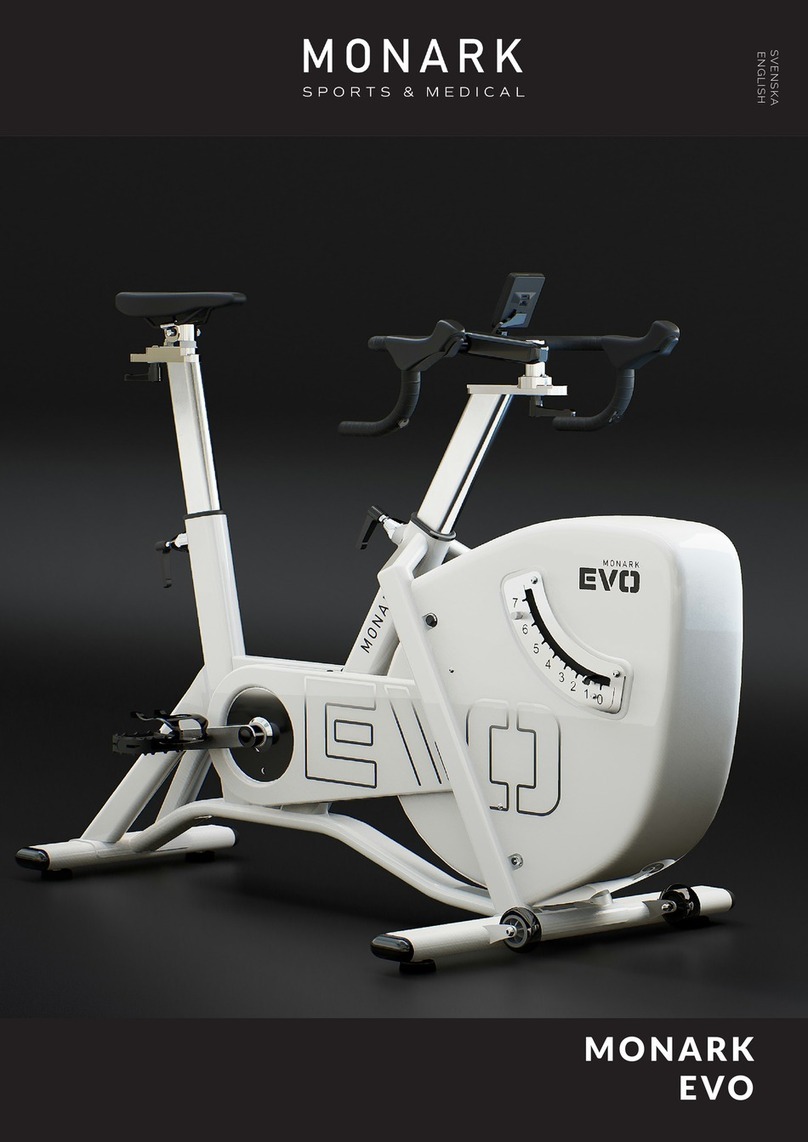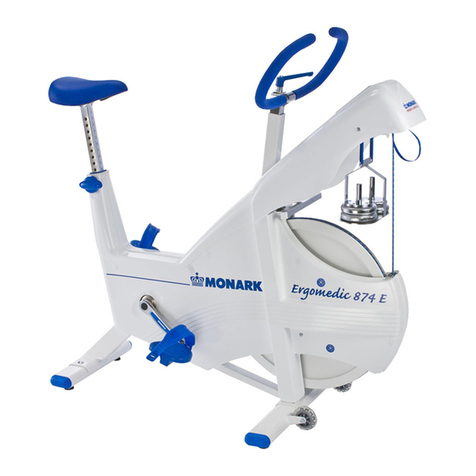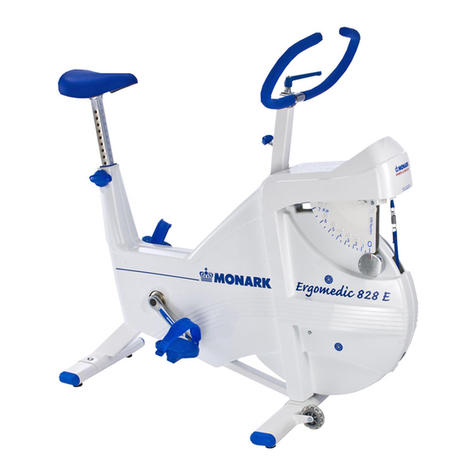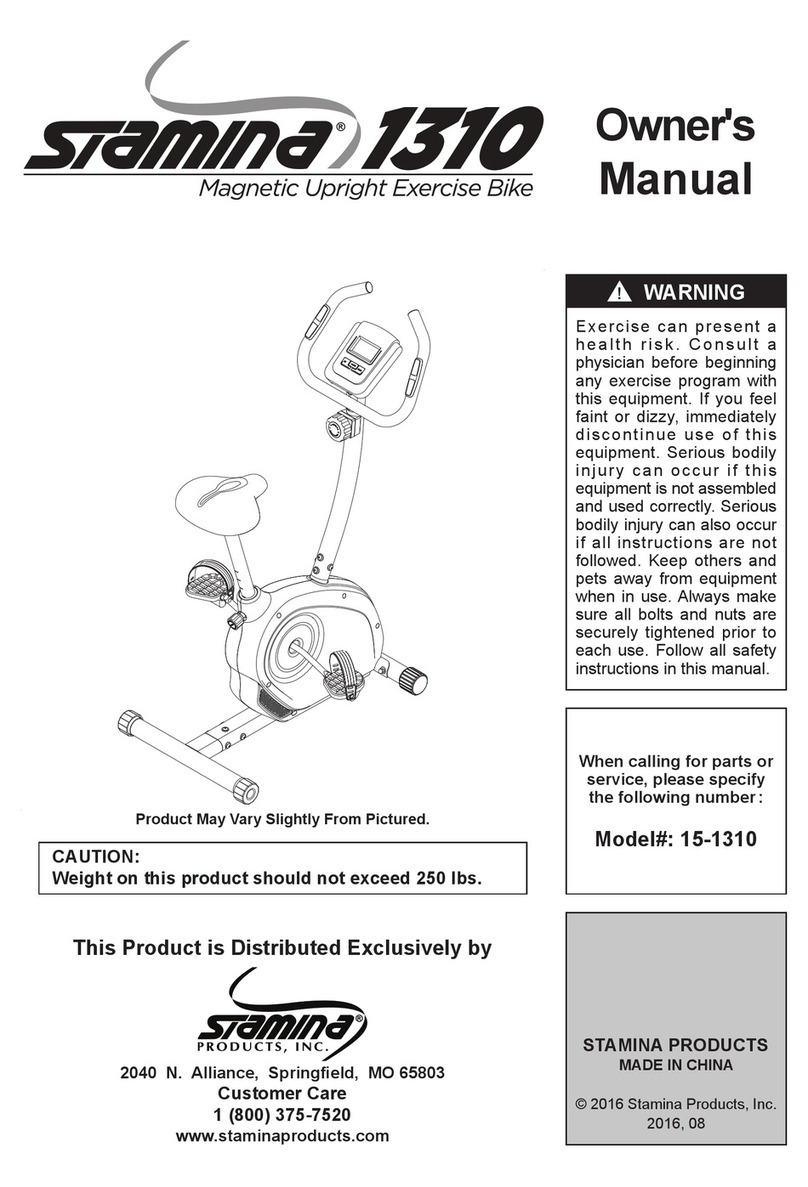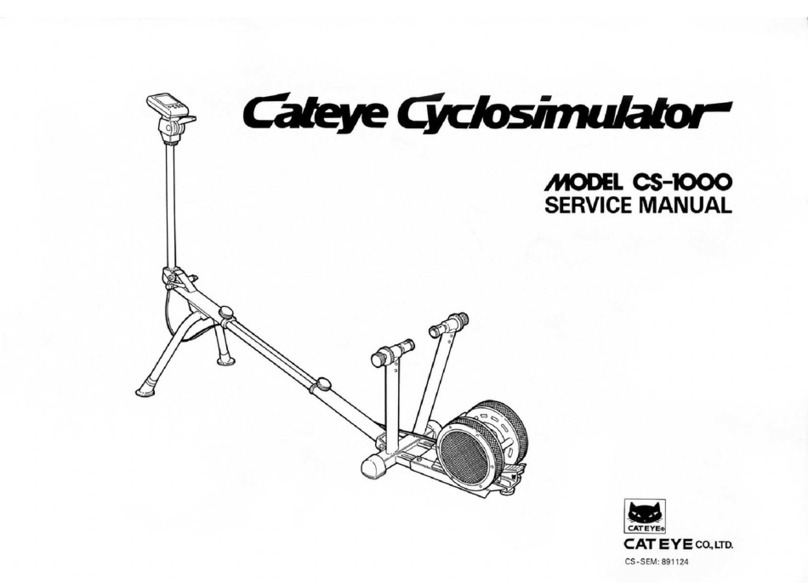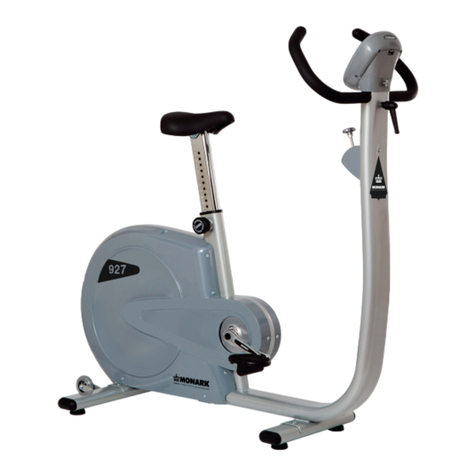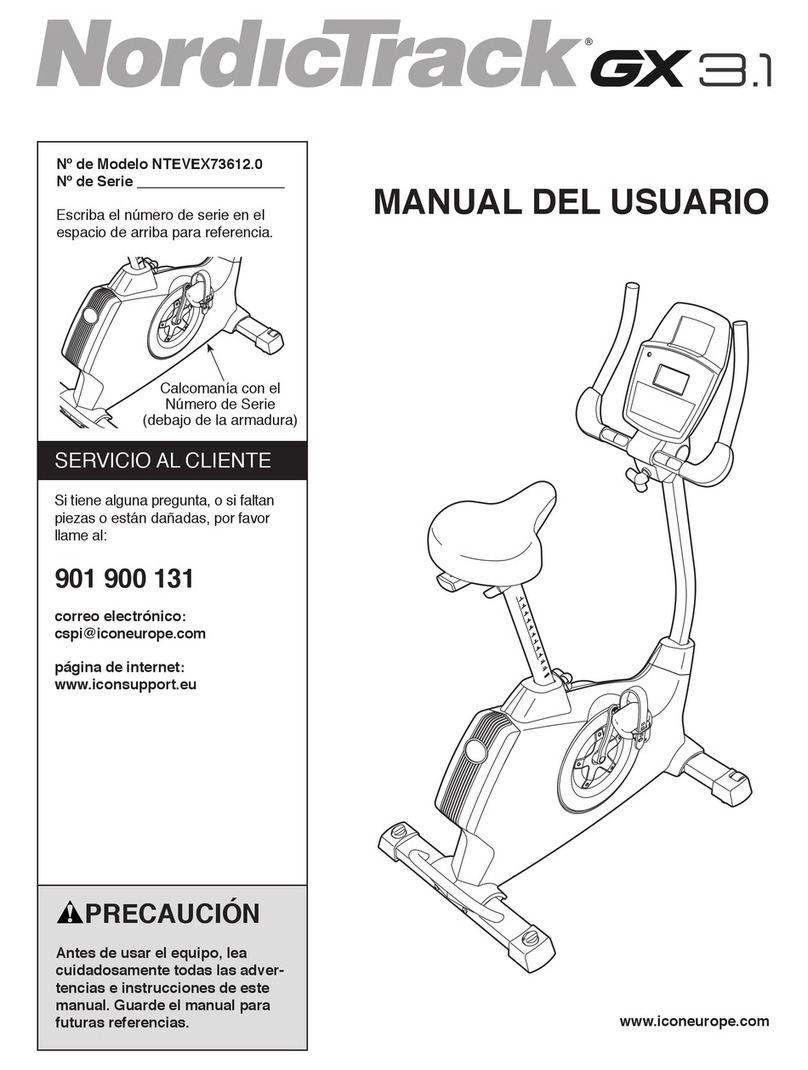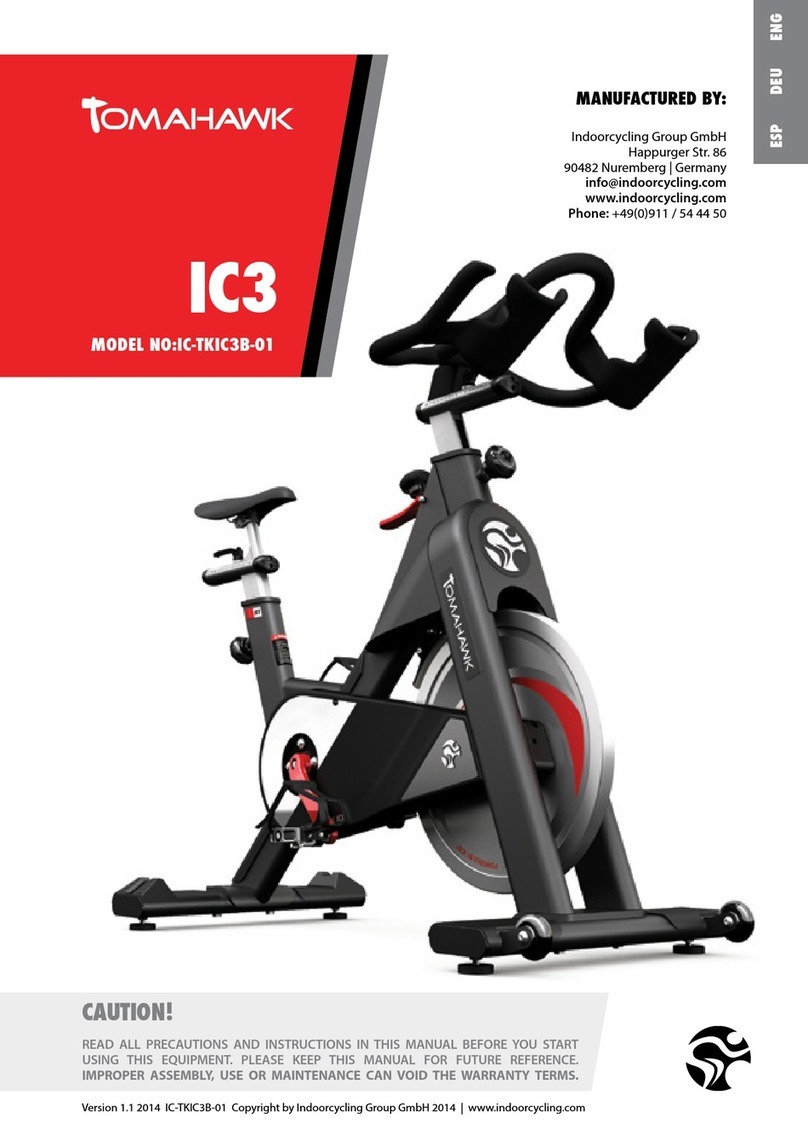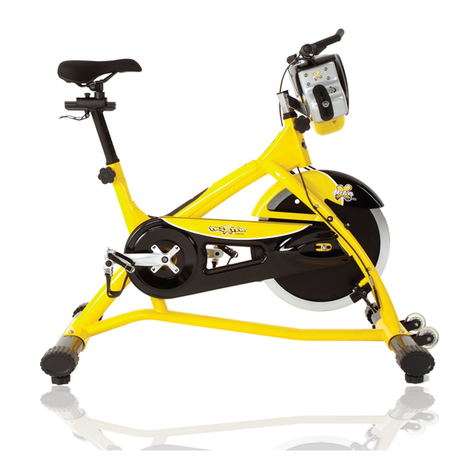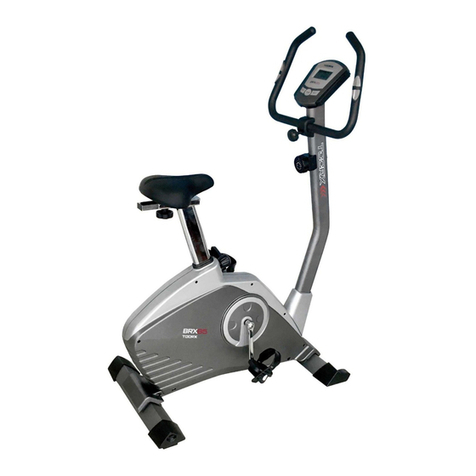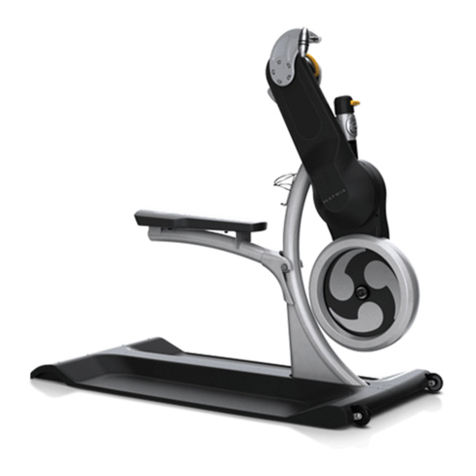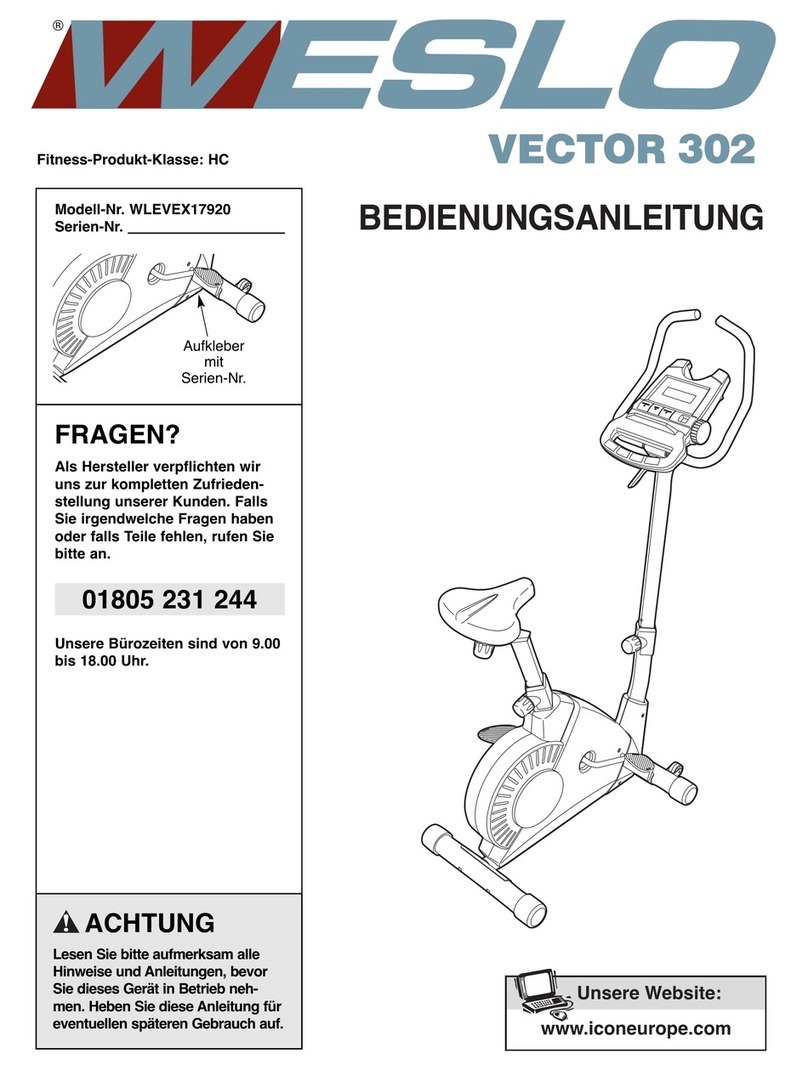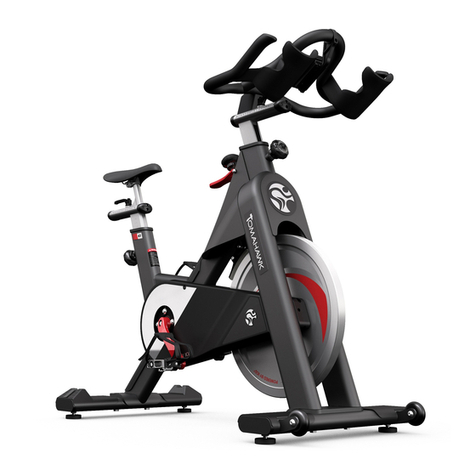
INTRODUCTION
OVERVIEW
The Monark 839 Electronic Ergometer is a complex structure of mechanical equipment under the control
of an elaborate computer system. The computer provides a fine element of control which was not possible
to obtain using strictly mechanical devices.
The mechanical component is basically the proven Model 818 ergometer, consisting of a stable, heavy
duty steel frame, a large well balanced heavy flywheel, a belt braking device, and a force measuring
pendulum assembly. Pedals and a chain drive are provided to spin the flywheel as a tension device
tightens the belt to regulate the braking force applied to the wheel. The pendulum indicates the applied
force directly on the scale located on the right side of the flywheel.
The computer system consists of one main unit and one terminal. The main unit reads in the pedal speed,
the applied force and determines the subjects heart rate by a chest transmitter or an ear plethysmograph.
Additionally, the base controller activates motor to adjust the tension of the belt, thereby regulating the ap-
plied braking force. The force may be automatically varied in response to changes in pedal speed to main-
tain a constant power workload.
The terminal( the remote or hand-held controller) communicates with the operator via a keyboard and dis-
play system. The operator instructs via a menu system the terminal to perform certain work functions
which are in turn sent to the main computer. The interaction between the computers is bidirectional, pro-
viding control instructions to the main computer and simultaneously providing speed, force, heart rate and
timing information to the terminal(hendheld).
HOW TO USE THIS MANUAL
The manual is divided into several sections. Initially, the section entitled “ Getting Started“ should be read
to establish some basic operating principles of the ergometer. This chapter enables the user to assemble
and check out the ergometer through some very simple procedures.
Once the user is confident in the elemental operation of the ergometer, reading should continue with
section “Testing with the 839 Ergometer “. This introduces the procedures for using the programmed
portions of the ergometer, the protocols.
Prior to reading the sections about the computer and protocols, the user should briefly read though the
portions concerned with the mechanical maintenance of the ergometer, the “ Mechanical Reference“. This
section describes periodic maintenance and repair techniques. Reading of this section is suggested so
that the user is aware of the proper maintenance philosophy at an early date, rather than after a
component failure.
Finally, the section “ Computer Reference “ should be tackled. The reader is advised to skim this section
on the first exposure due to the depth of the material presented. To avoid confusion, hands on learning is
probably the best technique after the initial reading. The reader should try depressing the keys as indicates
in the examples. The user need not to be concerned with the completion of a protocol. Learning how to
make the ergometer do what is desired is more important at this time. The proper setup of the test should
be the users focus.
Once the user feels comfortable with the basic operation of the ergometer, simple exercise should be
performed. The user should attempt to attach a chest belt during this exercise and verify that the
ergometer is under the control of the operator and that a stable heart rate is recorded. After the user
masters manual ergometer operation and is capable of instrument a subject to reliably measure heart rate,
protocol operation will be very simple. At that time, a review of the section entitled
“ Testing with the 839 Ergometer “ will prove extremely helpful.
1:1

